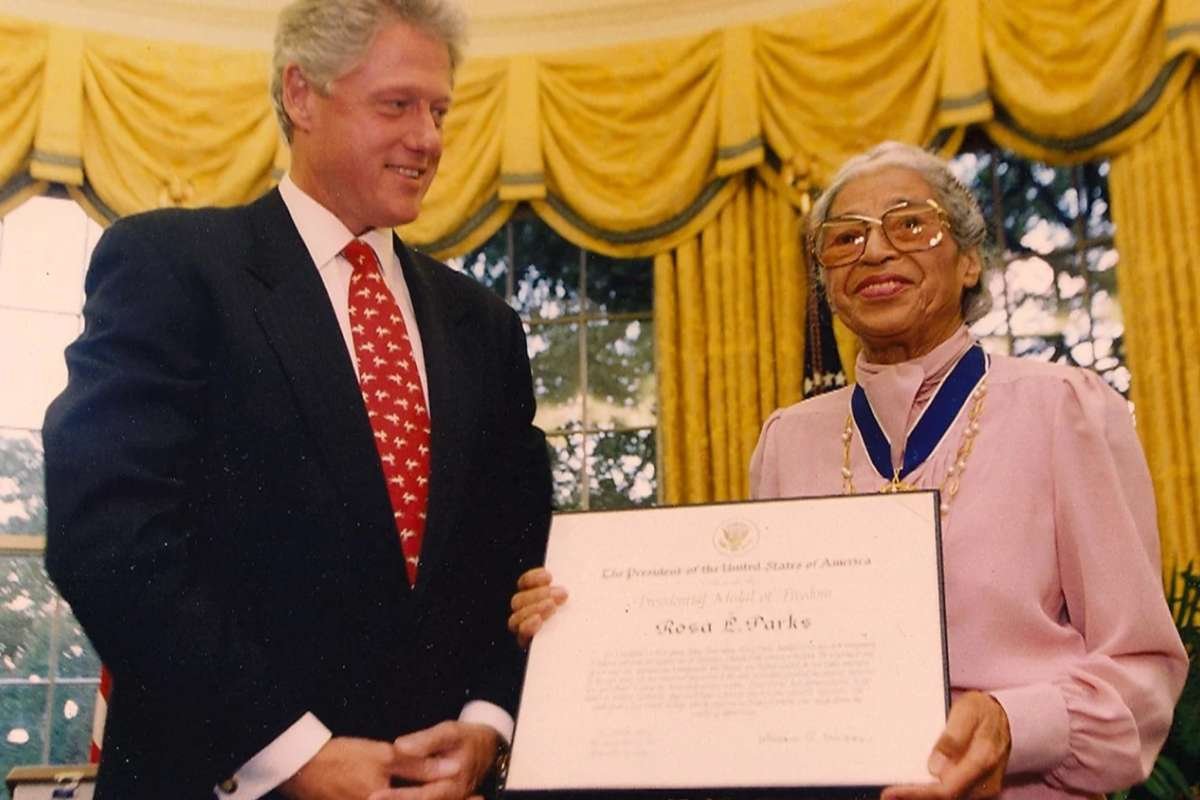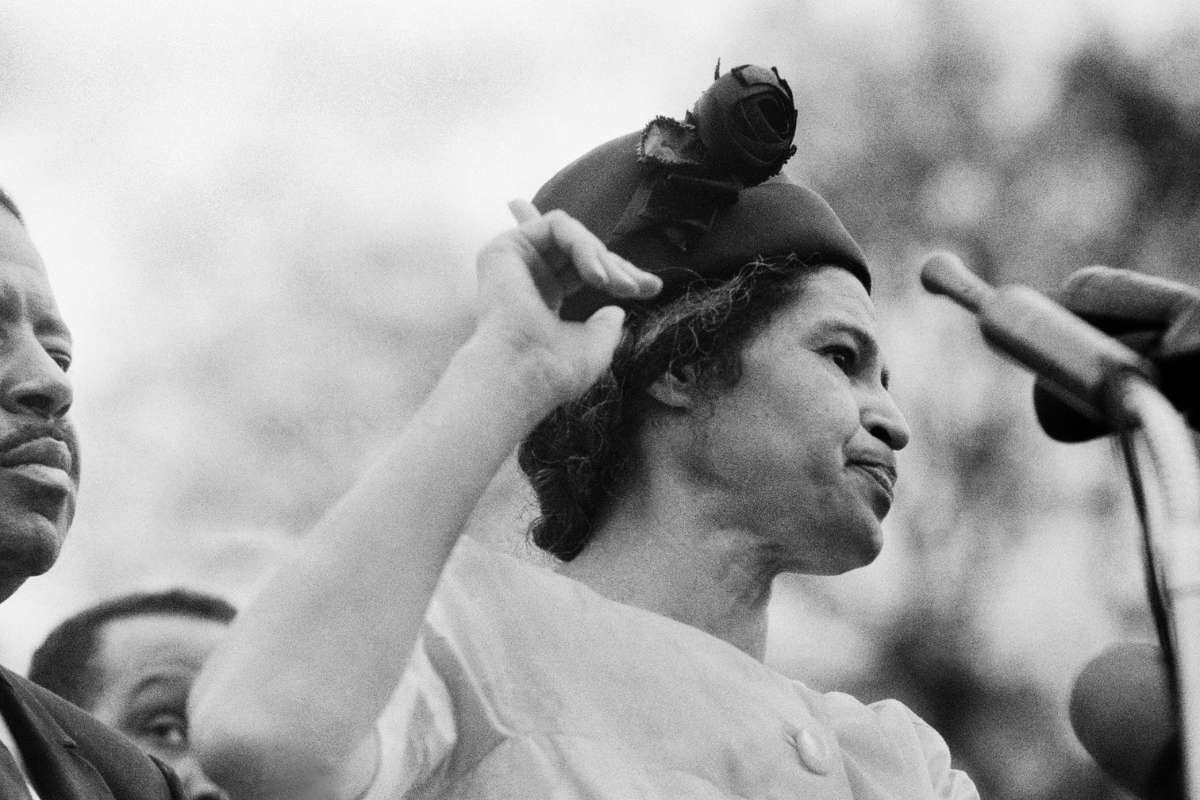Did you know Rosa Parks received the Congressional Gold Medal in 1999, one of the highest civilian honors in the United States? Not only this, there are many other awards – the Golden Plate Award, the Spingarn Medal, and many more that define her determination and dedication. To date, her excellent piece of work has inspired millions of people in various forms – Books, museums, documentaries, public monuments, and archives.
This article will teach you about American activist Rosa Parks, her early life, incredible work, and achievements.
Early Life and Education

Rosa Louise McCauley (Rosa Parks) was born on February 4, 1913, in Tuskegee, Alabama. Her father, James McCauley, was a carpenter, and her mother, Leona Edwards, was a teacher. When Rosa was young, she was often sick and small. After her parents got divorced, Rosa’s mother took her to Montgomery, Alabama, to live with their grandparents on a farm.
Rosa didn’t join school at the age of eleven because her mother used to teach her at home. She went to the Industrial School for Girls in Montogomery for her schooling, where she took different classes. Rosa joined laboratory schools for her secondary education but had to take leave early to take care of her elderly grandma. But she never finished, she established deep roots in the African Methodist Episcopal Church and developed a strong sense of community and spiritual guidance.
The Jim Crow laws of whites and blacks deeply impacted the early life of Rosa. She had to face challenges in every aspect of daily life – education, transport, and even public bathrooms, and drinking fountains. The white children who went to the schools were driven by the bus but the black children had to walk, and if they wanted to go on the bus they had to sit separately in the backside. This discrimination emphasized social justice and equality and influenced her toward civil rights and her later activism.
What Was Rosa Parks’s Contribution to the Civil Rights Movement?
Rosa Parks helped the Civil Rights Movement by refusing to give up her seat on a bus to a white passenger in 1955. She was arrested for this action which later sparked into Montgomery Bus Boycott led by Martin Luther King Jr. This boycott lasted for a year and ended up with a Supreme Court decision in favor of black people. The court decided that segregating buses was not right. Later on, she became a symbol of standing up against racism and inspiring people to fight for their rights.
10 Things You Didn’t Know About Rosa Parks
- The police arrested Rosa Parks for refusing to give up her seat to a white passenger. She became the second woman to be arrested for doing so, after Claudette Colvin.
- She helped boycott the Montgomery bus system. People supported her by not taking the bus. They found different ways to get to work. This boycott lasted for 381 days. In the end, the Supreme Court said segregation was illegal.
- Rosa and Martin Luther King Jr. were arrested for challenging bus segregation laws. Media covered this news of the high-profile arrest, which ultimately helped in the final decision of the court.
- Rosa and Raymond Parks moved to Detroit in 1957, receiving endless calls of death threats.
- NAACP awarded Rosa the Spingarn Medal. This award is given to a man or woman who shall have made the highest achievements during the preceding year or years in any honorable field.

- She founded the Rosa and Raymond Parks Institute, named after her and her husband, to carry on the lifework of youth development and civil rights education.
- She was a published author. Her works are Rosa Parks: My Story, Quiet Strength: The Faith, the Hope, the Heart of a Woman Who Changed a Nation, and Dear Mrs. Parks: A Dialogue With Today’s Youth.
- She was the first woman to lie in honor in the Rotunda of the Capitol and was the first woman and second person to receive that honor.
- There is a statue of Rosa Parks located in the Capitol Rotunda in Washington, D.C., in her tribute as a civil rights icon.
- In 2005, a new spider species was named after Rosa Parks to recognize her contribution to the civil rights movement.
4 Major Challenges Faced by Rosa Parks in the Civil Rights Movement
- Racial Discrimination: Throughout her life, Rosa Parks faced systemic racism and segregation, which limited her opportunities and subjected her to mistreatment.
- Loss of Employment: Following her arrest, she lost her job as a seamstress due to her involvement in the Civil Rights Movement and her defiance against racial segregation laws.
- Social Isolation: Parks and her family faced social isolation and harassment from segregationists and those opposed to civil rights activism. Her husband also experienced job-related consequences due to their activism.
- Legal Battles and Threats: Parks and other civil rights leaders faced legal battles, threats of violence, and intimidation tactics from opponents of desegregation and racial equality.
Conclusion
Rosa Parks’ actions and her lifelong dedication to civil rights were important in advancing equality for black people. She is a perfect example that shows how courage can make a difference in making sure everyone is treated equally. They should not be differentiated in terms of age, race, sex, or color.









